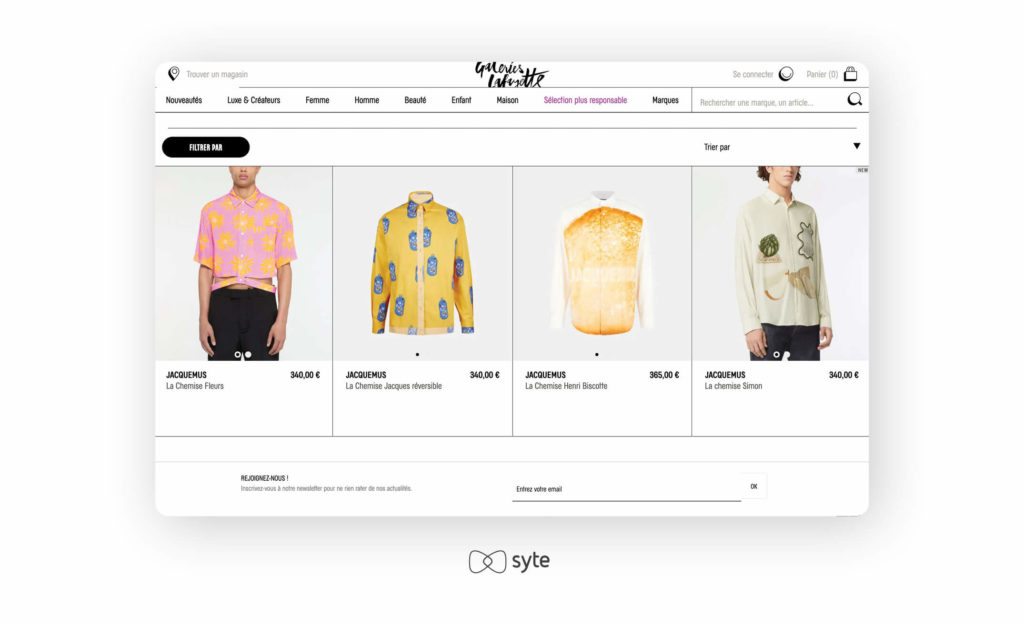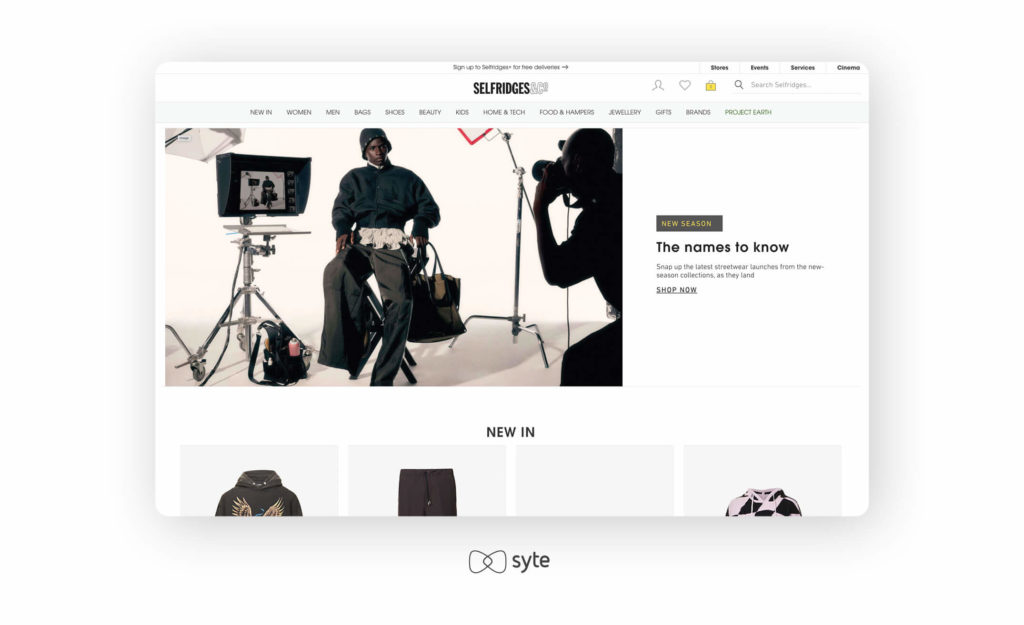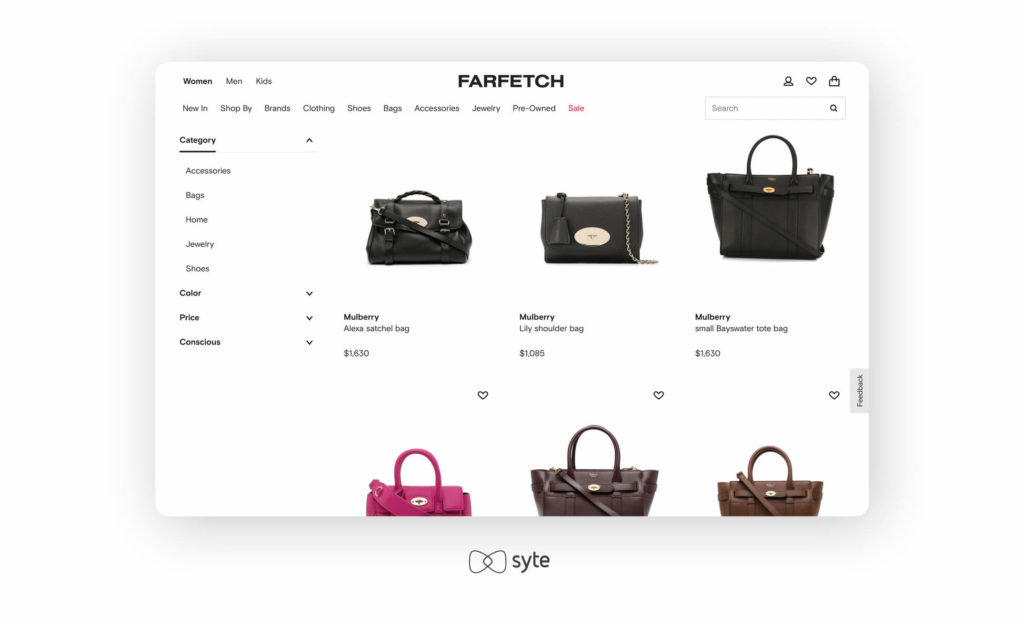The pandemic created a divide between brands and retailers, as orders were frequently canceled and brands began looking to direct-to-consumer (D2C) models to keep their businesses afloat. The scales tipped in favor of brands who built robust websites and quickly learned how to sustain their businesses without the helping hand of retailers.
This shift included testing the waters for eConcessions, which involve a retailer providing space for a brand to showcase products on its eCommerce site without buying or holding any inventory. In turn, the brand manages the stock and ships the products, with both sides taking a cut of the profits.

eConcessions are not a novel concept and have long been part of the merchandising strategies of European retailers like Selfridges and Galeries Lafayette. Along with artificial intelligence (AI) product recommendations, eConcessions are one of the two biggest e-commerce investments brands are making. In a Modern Retail survey of 46 fashion and beauty brands and retailers, more than 37% have introduced a third-party marketplace to their online stores, 35% of which did so in the last year.
While wholesale is a profitable and low-risk model, established brands and growing eCommerce businesses alike still rely on retailers to fulfill their end of the agreement as far as how merchandise is sold. During slower trading periods, discounts and buybacks inevitably occur and are out of brands’ control, which often creates tension.

Wholesale, eConcessions, and eConsignments — What’s the Difference?
Wholesale models are the most traditional exchanges between brands and retailers. In this type of agreement, a brand sells products to retailers at wholesale, with the retailer holding inventory and shipping the products.
With eConcessions, a retailer doesn’t own, hold, or ship products, but only provides an online space for brands to merchandise their items and sell on its eCommerce website. The revenue brands earn is typically higher than in a wholesale model, while retailers’ revenue is lower.
eConsignments involve a brand selling through a third-party platform like Amazon or Shopify. This set-up is convenient if the brand doesn’t wish to hold inventory or doesn’t have the infrastructure in place to handle eConcessions.
In a marketplace like Amazon or Farfetch, brands are not given control of merchandising and the way they can display their products, although they do provide customizable eConcession areas, as Farfetch has done with Mulberry. Most marketplaces require a fee, while eConcessions only involve commissions on every sale.

With drop shipping, brands don’t have any say on how their products are merchandised or priced on a retailer’s website but are only involved in shipping the products directly to customers from their warehouse.
The Benefits of eConcessions for Growing Businesses
eConcession models can be a win-win for brands and retailers, as it’s an opportunity for both parties to test a partnership before striking a wholesale deal. They are also a way to generate more revenue from new solutions.
Benefits for brands:
- Breakthrough for emerging brands that may lack the resources to open their own eCommerce stores
- Useful for small development teams with insufficient resources to implement technologies available on a retailer’s website
- More control over data, merchandising, imagery, pricing, and the product catalogue
- Direct line to customers without the mediation of another party
- Boosting the digital touchpoint with customers
- Gaining high-level customer insights and sidestepping markdowns and promotions
- Raising brand awareness beyond the existing customer base
- Higher revenues earned than in a traditional wholesale model
Benefits for retailers:
- Reducing inventory risk and tapping into more product availability through a brand’s inventory
- Wider reach through new categories and product assortments, which could make for more loyal customers
- Easing the customer journey, as shoppers are more likely to find what they need in one shop
- A way to expand product selection without taking on inventory management and costs
- Ability to swap out new products to match trends, rather than be limited to inventory bought at wholesale until sold
- Drawing in new customers and more transactions on the website as more people shop online
- Retailers that already have visual AI implemented on their sites can maximize results for brands
Supporting Product Discovery and Data-Driven Decisions
With greater control over merchandising and inventory, eConcession models are a way to gain more insight into how shoppers discover and purchase products. Through deep trend analysis, emerging brands can optimize merchandise planning and forecast their inventory assortment based on data-driven trends gleaned from shopper behavior. Detailed analytics can predict stock levels to avoid out-of-stock (OOS) or overstock scenarios and more closely align with consumer preferences.
This type of information can be extracted from AI-driven deep tagging that accurately tags products at scale on retailer websites. It ensures buyers easily find the products they’re looking for to drive conversion (CVR), average order value (AOV), and average revenue per user (ARPU), which is an upside for both brands and retailers.
Visual AI can also be used to personalize offerings for shoppers. For example, using past and current website sessions together with AI-based attributes, a personalization engine can predict the products that a shopper is likely to engage with and show the buyer a “You May Also Like” recommendation carousel. Camera Search and Inspiration Galleries powered by visual AI enable customers to upload any image to find visually similar items, which boosts product discovery and provides solutions for out-of-stock items.
Connecting consumers with hyper-relevant suggestions is a segue into building loyalty over the long term and return visits. It reduces the bounce rate and drop-off and eliminates dead-ends.
Growing eCommerce brands can work with retailers to run A/B tests and assess how changes impact key metrics like AOV, CVR, and other figures. The experiment’s results can be monitored and adopted to the winning variant.
Wrap-Up
eConcessions are already making waves in the eCommerce sphere and will be a part of the revenue share for brand and retailer partnerships in the foreseeable future. The eConcession model can be a win-win scenario if each party stays true to the essential elements brought forth by each side. The choice of online concession or consignment will vary from brand to brand and depends on goals and the infrastructure in place.
The move towards eConcessions may also be a beacon for changing the luxury industry’s gloomy outlook on Amazon, which is viewed by many brands as a downgrade. The same could be said for the once bleak attitude about online shopping many years back, which turned out to be a big hit for eCommerce lovers.